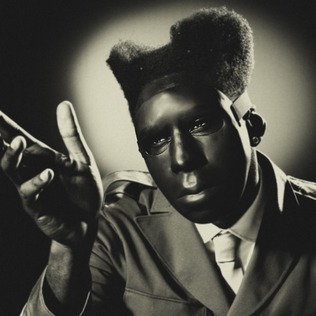Is the belief in miracles the mark of a fool?
One thinker and a Scottish philosopher David Hume devoted one of his most widely read work 270 years ago, the “Enquiry Concerning Human Understanding” to this affirmation.
In the 10th section of the book entitled “Of Miracles,” Hume claims to have discovered an argument that will check what he calls “all superstitious delusion.”
It is based on this definition of a miracle: “A transgression of a law of nature by a deity or invisible agent.”
Though not original to Hume, this definition quickly gained wide assent. Just 60 years later, Thomas Jefferson had produced his own version of the Bible, “The Life and Morals of Jesus,” from which all the miracles had been expunged as offences against reason.
In the book, Hume argued:
“The Christian religion not only was at first attended with miracles, but even at this day cannot be believed by any reasonable person without one. Mere reason is insufficient to convince us of its veracity: and whoever is moved by Faith to assent to it, is conscious of a continued miracle in his own person, which subverts all the principles of his understanding, and gives him a determination to believe what is most contrary to custom and experience.”
By defining miracles as either highly improbable or perhaps even impossible events, Hume guarantees that reason will always weigh strongly against them. He points out that different religions have their own tales about miracles, but because they contradict one another on multiple points, all of them cannot be true.
He also argues that those who claim to have witnessed miracles are gullible and hopelessly biased by their own religious beliefs.
Nay, inasmuch as it was a milestone in philosophy, the 10th section, “Of Miracles,” was intentionally omitted in the original text. Hume later explained that he excised the section to avoid offending his readers’ religious sensibilities – and perhaps also to spare himself the censure to which doing so would give rise. Yet the 10th section is included in all modern editions.
Hume’s views on miracles have many defenders in the present day.
Biologist Richard Dawkins defines miracles as “coincidences which have a very low probability, but which are, nonetheless, in the realm of probability,” implying that science can account them for.
The late polemicist Christopher Hitchens rejected claims of miracles by saying, “That which can be asserted without evidence can be dismissed without evidence.”
So pervasive is Hume’s account of miracles that it can even be found in the dictionary. Oxford Dictionary’s definition of a miracle is, “an extraordinary and welcome event that is not explicable by natural or scientific laws and is therefore attributed to a divine agency.”
If miracles do not contradict science outright, the definition suggests, they at least resist explanation by scientific principles and thus stand out as supernatural, a category of events that many people reject out of hand.
Well, let’s suppose Hume et al.’s perspectives on miracles were simply Christian unfriendly philosophy and that leaves us to other accounts of miracles which are also possible.
Writing in the 5th Century, Bishop Saint Augustine of Hippo explicitly rejected the idea that miracles are contrary to nature, holding instead that they are contrary only to our knowledge of nature.
He argued that miracles are made possible by hidden capacities in nature placed there by God. To wit, our knowledge of what is naturally possible is limited, and new potentialities may over time reveal themselves.
At prior points in history, many capabilities we take for granted today would have seemed miraculous. Human flight, the wireless transmission of the human voice, and the transplantation of human organs would have struck men like Hume and Jefferson as impossibilities. It is likely that as history continues to unfold, new capacities in nature will be identified, and human beings will command new powers that we cannot imagine today.
It would be a mistake, however, to assume that the course of history inexorably moves unusual events from the domain of the miraculous to the scientific.
Augustine famously wrote:
“Is not the universe itself a miracle, yet visible and of God’s making? Nay, all the miracles done in this world are less than the world itself, the heaven and earth and all therein; yet God made them all, and after a manner that man cannot conceive or comprehend.”
Augustine does not argue that human understanding cannot advance, or that science is impossible. Nor does he regard science and miracles as opposed to one another.
Instead, Augustine is highlighting an account of science and the human desire to know that treats the world as we experience it every day as no less miraculous than any event that science cannot explain. From this posture, daily life is full of wonder, if only we see it rightly.
That is while some, Hume among them, might say that it would be a blessing to drive out all trace of the miraculous from our view of the world, perhaps even dismissing the possibility of miracles outright, others beg to differ. Far from seeking to expunge the miraculous from life, they strive instead to reawaken humanity’s awareness of its presence.
Biblically, miracles are acts of God that proclaim his sovereign power over creation and his commitment to the good of his people. They are often significant because they serve a larger purpose in God’s redemptive plan, testifying to the authenticity of God’s messengers who bring his revelation to humanity.
This is one of the primary functions of miracles in the scriptural narratives:
“When miracles occur, they give evidence that God is truly at work and so serve to advance the gospel.”
Miracles authenticate God’s message and his messengers.
Jesus’ miracles authenticate his authoritative role in the divine plan that brings salvation (Luke 7:22). In fact, the scope of Jesus’ healings shows the breadth of his authority. He heals the sick, casts out evil spirits, and cures a variety of specific conditions: a flow of blood, a withered hand, blindness, deafness, paralysis, epilepsy, leprosy, dropsy, and fever. He resuscitates the dead and exercises power over nature, to awe and wonder.
Yet, regardless of there being the Scriptures that outrightly shows how miracles augment the first Church, there is a parallel line between what they were taken for before and what they are taken for by the modern day evangelical churches.
Earlier in February, Pastor Alph Lukau made headlines after a video clip of him raising a ‘dead’ man during a church service went viral. The cleric enjoyed free press as the world took turns to mock the bizarre and rather poorly choreographed stunt, which many believe was a mere attention-seeking act.
The church would go on to backtrack on the resurrection miracle that never was, saying the “dead” man was actually “already alive” when his “body” got to the premises, and that Lukau had only “completed a miracle that God had already started”.
To many, that sounded much like an admission of a blunder.
That begs the question; Was there ever a miracle?
Just when people thought the church as a whole has learnt from this odium, a Highfield family had to abandon burial for their deceased child last week after being assured by prophetesses that their dead relative was still alive.
According to the local tabloid H-metro, the family which lost a Form Four girl could not continue burial rituals at Granville Cemetery after two women from the white-garment wearing apostolic sect came to the cemetery claiming that the girl was still alive. The family had to take the body of Dephine Mutemeri home after being told by the prophets that the girl was alive.
Imagine the awe that the funeral procession group had upon hearing such an unusual claim.
Dephine died after complaining of a headache and her body was taken to Runyararo Funeral Parlour for two days and on the burial day.
All drama ensued which saw the family leader stopping funeral proceedings as some relatives insisted that the prophets could have been telling the truth.
“The girl’s uncle could not continue with burial ritual as some sections believed that the girl was still alive. The uncle was under a lot of pressure and he could have bowed down to pressure for fear of backlash that he could have buried a living person.
“He had to order the hearse to drive to Southlea Park Police Base fleeing from mourners who demanded that the resurrection miracle be conducted,” said one family member on the condition of anonymity.
Residents gathered by the family house in anticipation of witnessing the first Lazarus moment in Zimbabwe.
The two prophetesses had beefed up with the addition of a Madzibaba and they vowed to have accomplished their mission of raising the dead girl to life overnight.
Several theories carried the day with the major theory suggesting that the girl was alive and had taken two glasses of water after the resurrection.
A Report Focus News correspondent was assured that the girl had indeed, been resurrected and taken back home where she was eating and drinking.
To add weight to the theory, several mourners insisted the coffin be opened so that women of god conduct rituals to raise Dephine.
“We went to Southlea Park Police Base with the body and the women could not raise the girl, and we then proceeded home for further rituals after insistence that the girl would resurrect,” said a family member.
The family member said it had been works of evil spirits and the prophetesses would bring the girl to life.
Other family members insisted that the girl was dead but succumbed to pressure from mourners that Dephine was alive prompting them to abandon burial.
Family sources said there was pressure from mourners that if the family buried the girl then they would have probably buried the girl alive.
“Some family members insisted that the girl was really dead but because of divisions they just thought of postponing the burial. Time was also running out so the only other option was to go back home.
Burying Dephine could have been a Herculean task considering the number of people who insisted that the girl was still alive,” a family member said.
Circumstances regarding what really transpired resulting what was said to be a resurrection are still unclear. Not much could be ascertained on why the family had brought Dephine’s corpse to the house from the cemetery.
Police had to be called in to maintain order and allow passage of the hearse as it drove off to the cemetery where Dephine Muteneri was finally laid to rest.
The apostolic women who had attempted to resurrect Dephine were nowhere in sight and their whereabouts could not be established.
As if what people have seen wasn’t enough, there were reports that another supposed Pastor surfaced and claimed he could resurrect the girl, but the family had been visibly devastated and had gone through enough trauma after the Mapostori stunt (failed resurrection).
While only a very few of these indecipherable and incoherent stories are making it to the limelight, it is an uncontested truth that a lot of supposed miracles and marvels are happening behind the closed doors of pews and pulpits, most of which we would never know.
It’s these stories that unstintingly give limitless room to critics such a Hume to trash talk miracles, reducing them to highly improbable or even impossible events.
Perhaps it could be better for Christians to understand the art of miracles, that it is not essentially the lifeline of the gospel. Put bluntly, the church could do without these types of miracles, hence there is less need to stage-manage or try so hard to defy logic and reason to get converts. The gospel alone is a herald enough of God’s sovereign power over creation and his commitment to the good of his people.
The signs and works Jesus performed during his ministry could not fully accomplish their true end until Jesus had risen from the dead and been exalted. Only at that point could they be seen for what they were.
By contrast, the works believers are given to do through the power of the eschatological Spirit, after Jesus’ glorification, will be set in the framework of Jesus’ death and triumph, and will, therefore, more immediately and truly reveal the Son.
And while these works certainly included the signs and wonders done by the early church in the Spirit’s power, they weren’t limited to those miraculous deeds. Instead, they also included the “mystery” of Gentiles being included into the one new people of God. God’s miraculous works in the church include the forgiveness of sins and the inclusion of those who were formerly far off into God’s one new people. Healings, resurrection miracles, signs, and wonders are extraordinary, yes, but no more extraordinary than the redemption accomplished by Christ.
Even if we don’t frequently see extraordinary miraculous events, God is active. He is active in the regular (natural) processes we see daily. He is miraculously calling people to himself as his church grows and expands. He is active in miraculous ways among people we don’t know around the world.
Whether or not we’re privileged to witness obviously miraculous, supernatural events, Christians can be confident that God is actively at work in the world, bringing people to himself, bringing glory to Jesus, and building his church.
Hallelujah Magazine is committed to publishing reliable, trusted, quality and independent Christian journalism. Our journalism is free from commercial bias and is not influenced by wealthy people, politicians, clerics or shareholders. We value our readers’ feedback, suggestions, and opinions. Have something to add to the story? Share it in the comments section below.






















